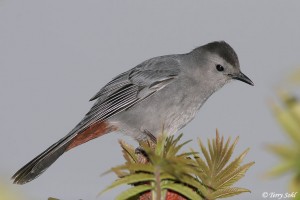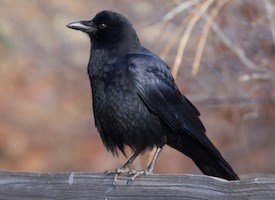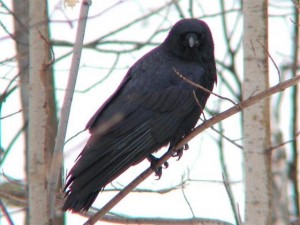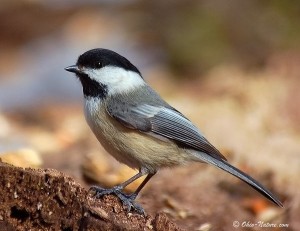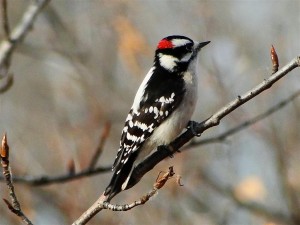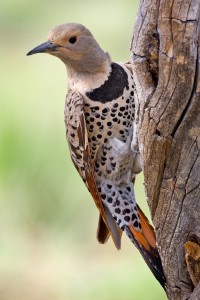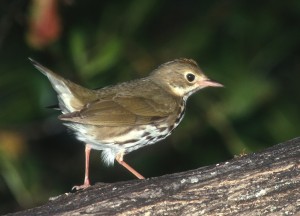Roughly 6 years since the end of the Copenhagen climate negotiations, the first globally unified climate change mitigation agreement has been signed. 196 nations have signed on including all major countries such as the US, China, etc.. Among other things the agreement is mostly voluntary in terms of what changes are to be made from developed and developing, but the experts around are extremely hopeful. The wording they continually use in the piece above and in others that have read seem to use the word “aggressive” a lot, so in that respect the agreement must be something unlike any other global pact previously designed. I know one of the major accomplishments coming from the pact is this developing nation fund that should be worth around $100 billion, so they can use it towards subsidizing sustainable development projects and green energy. Additionally, another important accomplishment is this idea of a technology sharing network between developed and developing nations. This could be substantial going forward because a major conflict between say India and US is the broad technology gap especially in terms of energy generation. This pact could not only be a great thing for climate change, but also human welfare. Overall, I am extremely hopeful that this will work and I think at this point that is the only way to feel.
Author Archives: Jeremy Cooley
RP4: Hawking on Cabela’s
Hawk Mountain
Over the past weekend, I had the opportunity to travel and visit Hawk Mountain, a non-profit bird conservation site and organization. From a bird viewing standpoint, Hawk Mountain is bar none one of the best places I have ever been to; as a class the amount of birds of prey got to see was pretty astonishing and something that I, as a newly-established bird identifier, will remember for the rest of my life. With that being said the following reflection are the additional takeaways that I came away with from my trip.
Stepping into the Hawk Mountain visitor center and gift store, there was an evident version of nature that was trying to be conveyed to the consumer. The “nature” that Hawk Mountain was trying to embody with their visitor center is one that revolves around birds and in particular birds of prey. There were some books that had to with other areas of nature and conservation in general. For example in the book section I located a book about invasive species and another about sustainable gardening. Nevertheless, a majority of the store housed bird-centric memorabilia and knick-nacks, my favorite of which was bird-opoly because it seemed so ridiculous. Other than the useless merchandise, I did enjoy the overall layout of the center and especially the migration machine that made it very easy to understand the distance many of these birds of prey travel in a given year. The visual aspect to learning was incredibly effective at displaying just how incredible these birds are and need centers like Hawk Mountain to market just how impressive these birds are. The next takeaway I noticed was how Rachel Carson was not mentioned at all for what I can remember.
Rachel Carson’s connection to Hawk Mountain is that she used immature Bald Eagle population data gathered at Hawk Mountain in Silent Spring as evidence of DDT’s harmful effects on the environment. Regarding Rachel Carson, she is arguably the most polarizing and famous figure in conservation related sciences today. It was surprising to me that she was not mentioned at all by either the Hawk Mountain Handouts, or by the professional bird counter. Instead the focus was on a different leading lady in conservation, Rosalie Edge, the original founder of Hawk Mountain. To me the focus on Rosalie Edge was more fulfilling and interesting because I had not heard of her before Hawk Mountain, whereas I had known Rachel Carson and had read Silent Spring. The telling of her story really added some depth to my overall experience at Hawk Mountain and in a sense highlighted the fact that there are many deserving characters in conservation, yet are overlooked and sometimes forgotten due to the Carson’s and Leopold’s of the world. Connecting both Rachel Carson and Rosalie Edge to my next takeaway, there seems to have been a real change in culture from what the common perception of birds of prey were during their time and what it is now.
Prior to the installation of Hawk Mountain, birds of prey were looked at as pests to livestock and farmers, so they were constantly shot at. The persistent killing of these birds has waned over the years as consistent education surrounding birds of prey and conservation areas have become more prevalent, yet unfortunately to this day many birds of prey are still “accidently” killed by both hunters and civilians alike. Nevertheless, the major change surrounding birds of prey is this shift in thought that has come from community education efforts that has focused on discredited the fact these birds are pests. From my recollection from the Golden Eagle show most of these birds only reproduce up to the point the ecosystem they live in allow them to. The reproductive system these birds have in place specifically allow them to conform to what an ecosystem can handle, so the population size itself does not become a problem. For this reason the more birds of preys that are in an ecosystem the higher likelihood that a given ecosystem is healthy and sustaining itself. To reiterate birds of prey have inherent adapted traits that allow them to specifically not become pests on an ecosystem. This fact is incredibly remarkable to me from the standpoint of how wrong people were 100+ years ago for shooting these birds and labeling them something they were simply not.
To conclude my experiences and takeaways from Hawk Mountain I will leave you with my opinion on the golden eagle show. Of all the activities, my least favorite was the golden eagle show because it was the antithesis of what the park was founded upon. The golden eagle was in obvious distress and emotional pain during the show and longer the show went on the more I felt the bird’s pain. The bird was being used to educate people, but looking back I could have done without seeing the bird just knowing the fact it was in a place that did not caused it pain and allowed it to live reasonably well. In the future I think this experience as changed my own opinion on animals in captivity and whether we are actually helping them by unnaturally keeping broken animals alive. It is a question generated by that experience that will keep me thinking for quite some time.
Cabela’s
After my trip to Hawk Mountain, I had the opportunity to also visit Cabela’s, a hunting and outdoor excursion mega-store. There were obvious differences between Cabela’s and Hawk Mountain, but in a way both tried to convey many of the same points involving nature and conservation. Cabela’s was more focused on the retail aspect and appeal aspect of nature, but that is also something Hawk Mountain tried to do as well with their gift store.
Unlike Hawk Mountain, the sense of “nature” that was presented in Cabela’s was extremely conflicting. On one side the store had many occurrences where they supported species conservation and sustainable practices. Then on the other hand along with many of consumers, there was a side that saw “nature” as this entity to exploit and take advantage of. This second side can best be seen from the exotic taxidermy section that housed many endangered or threatened species like the Bengali Tiger and the Elephant. Additionally, the taxidermy presented “nature” as this overly-magnificent entity because it only housed animals that were overly-large, or unique in their own right. This idea was substantiated by the fact that none of the taxidermy was from the east coast, nearly all the deer were from four states: Idaho, Colorado, Wyoming, and Michigan. The Cabela’s was located in Pennsylvania, a state with a longstanding history with deer hunting, not presenting taxidermy specimen that were locally harvested made the “nature” presented in the store artificial and not something that I could recognize with. With this being said Cabela’s is just as much a museum as it is a retail store.
Of the many products being sold at the store, the gun-centric memorabilia was the odd products that caught my eye; there were gun plungers for god’s sake. The amount of gun centric products was a bit overwhelming because of all the horrible atrocities that have come from rampant gun purchasing, but I guess it is something that is extremely attractive to a certain population of consumers. Other than the guns, if you’re an outdoors person whether you are an avid ice fisherman looking for the artificial bait Gulp, or you are hunter looking for a new Bowie knife, Cabela’s literally has everything; it is a mega-store. Looking past the abnormal and the inherently outdoorsy stuff, there are a lot of normal, quality products for sale as well. Walking into Cabela’s one could buy Under Armor, Oakley, and North Face, all brands that could be bought any old clothing store. So what this all boils down to is this idea that Cabela’s is essentially a Macy’s with a slight touch of the outdoors.
The last detail I would like to mention from my experience at Cabela’s is the people that shop at Cabela’s. There was definitive visual difference between the overall crowd at Hawk Mountain and at Cabela’s. The people for the most part at Cabela’s were hunters, gun-advocates, ice fisherman, and the list goes on. The people at Hawk Mountain were naturalists, bird enthusiasts, and students. There was nothing wrong with either crowd, but I will say I had more laughs in the Cabela’s then I did at Hawk Mountain. One of my most memorable and funny experiences in Cabela’s was when I was in the gun room. I was looking at a gun case with Italian shotguns guns worth $7,000 and $9,500 in it. A tattooed, stout man walked right in front of me stared at the glass case, put his hands on it and then turned to his wife standing behind me. He waited for moment sort of looking at me and sort of at his wife and yelled with a slight Central Pennsylvania accent, “I guess we will wait for Black Friday.” I gave a chuckle, but the man seemed to not be kidding from the look on his face. People like one man I witnessed in the gun room epitomize what Cabela’s is, a high-quality outdoors store with a consumer base that is equally enamored with outdoor living, so much so they are willing to buy a $9,000 gun to prove their loyalty and unbounding love towards nature and the environment.
A Note From the Bat Study
Anthropocentric spread of invasive pathogens in wildlife and domestic animal populations, so-called pathogen pollution, poses substantial threats to biodiversity and ecosystem integrity and is of major concern in conservation efforts (Winifred F. Frick et al. 679).
This statement from the introduction of the bat article truly resonates with me because I recently researched amphibians of the tropical Andes, which has the most amphibians in the world of any biodiversity hotspot and the main cause of there extinction is human introduced pathogens and viruses. Additionally, they are also being effected by anthropocentric climate change another human induced problem that may extinct 70-80% of all amphibian species within the next 50 years. The real questions now is can they be conserved because human interference in these hotspot areas is only increasing and climate change seems to have only begun rearing its true face.
Quotes from Assorted Readings
The falcon hangs in space for second after second, motionless, as if suspended on a thread, its wings, body, and spirit in perfect equilibrium with the streaming torrents of the air. Give your heart to the hawks, urged Robinson Jeffers. Okay, I thought, I’ll do that. For this one splendid moment. Until the falcon sheers on the wind and vanishes in storm and light” (Abbey 54-55).
I really enjoy the imagery of this scene as it relates to my own experiences with birds in nature. The calmness and simplicity of a darting bird across the landscape is something that I hope to see when I go out into nature. I do not believe I have ever seen a peregrine falcon, but I have had similar experiences with water birds like cranes and pelicans where they swoop down snatch their intended prey and fly off never to been seen again by my eyes.
“The birds were excited, stammering new songs all day long. Titmice, which had hidden in the leafy shade of mountains all summer, perched on the gutter; chickadees staged a conventicle in the locusts, and a sparrow, acting very strange, hovered like a hummingbird inches above a roadside goldenrod” (Dillard 247-248).
This passage in particular makes me proud of myself in terms of labeling things in nature. Every bird and plant named in this, I would be able to identify and point out if need be. This wealth of labeling expertise also in terms of reading I thinks adds some depth and significance to the overall understanding of awe Dillard is trying to get across when bird watching.
“One attraction in coming to the woods to live was that I should have leisure and opportunity to see the Spring come in” (Thoreau 333).
I understand the feeling Thoreau is trying to get across when he says this, but I can not agree with him about the leisure standpoint. The changing from winter to spring to me is not leisure, it more closely related to restlessness and anticipation because you want it to come so badly.
Thus it seemed that this one hillside illustrated the principle of all the operations of Nature.The Maker of this earth but patented a leaf. What Champollion will decipher this hieroglyphic for us, that we may turn over a new leaf at last? This phenomenon is more exhilarating to me than the luxuriance and fertility of vineyards (Thoreau 336).
I do not know what I really get out of this passage, yet the imagery and metaphor in it is something I can use to better understand my own feelings about the changing of seasons.
Passages From Walden & Nature Wars
“The first task for settlers was tree removal– that is, unless he was lucky enough to find and pay a premium for a beaver created meadow good for growing hay and pasturing, or Indian-cleared field for planting crops. Trees were an impediment” (Sterba 25).
The history of the timber industry and deforestation is something that concerns me because it seems to not have stopped , or slowed down– and this is how it all began; it simply has moved elsewhere following that path of least resistance theory. How can we switch this mentality of tree conservation and stop forest degradation that now has stricken South America?
“Now only a dent in the earth marks the site of these dwellings, with buried cellar stones, and strawberries, raspberries, thimble-berries, hazel-bushes, and sumachs growing in the sunny sward there; some pitch pine or gnarled oak occupies what was the chimney nook, and a sweet-scented black birch, perhaps, waves where the door-stone was. Sometimes the well dent is visible, where once a spring oozed; now dry and tearless grass; or it was covered deep — not to be discovered till some late day — with a flat stone under the sod, when the last of the race departed” (Thoreau 168).
I think to me this passage is another reminder of this constant fight between humanity versus time and nature. It seems humans cannot win in that fight because eventually the land will result back to its original form because a life only last years and nature carries on almost infinitely. In this passage I am visualizing a ruin of an old cabin, buried almost entirely in the earth with an almost defeated personality being emitted.
“At this season I seldom had a visitor. When the snow lay deepest no wanderer ventured near my house for a week or fortnight at a time, but there I lived as snug as a meadow mouse, or as cattle and poultry which are said to have survived for a long time buried in drifts, even without food” (Thoreau 171).
This passage I can completely understand his critique about winter solitude. When it is cold I enjoy staying inside, reflecting on myself, and not really seeing anyone. It may have something to due with the winter weather, but to me is a good rotation between seasons. In the Spring/Summer/Autumn your social and in the winter a step is taken back and your always a bit more quiet and solitary. I do not know why this is, yet I noticed it happens.
Birds of the Catskills
Looking back on our recent trip to the Catskills, I have come to the realization that my entire hiking experience could be outlined based on the birds I saw and heard. It is only recently from my other class in Conservation Biology that I have learned how to amateurishly identify birds, but I find it interesting and important to understand the biodiversity of an area and birds are something very manageable to do. For this reason the rest of my blog post will be a timeline of the birds I saw going along with the flow of the hike and our trip in general, and the corresponding bird pictures .
The first bird I saw and heard was the Gray Catbird. It was during our initial hike up past the elderly hiking group. Right before I began the slight climb up to the group I stopped for a moment and heard a slight murmuring cat sound, looked to where it was coming, and saw two gray/white birds buzzing around the adjacent canopy.
The American crow was the second bird I believe I saw. This is based on the fact I believe it was different than the Raven Professor Brandes later pointed out. I did not sight this bird, but its call it very definitive and its possible I heard more than one while leading the hike up towards the ledges.
As everyone most likely witnessed and remembers, this is the North American Raven that went squawking by us when reminiscing up at the ledges. Its very similar to the American Crow in appearance , but is much larger.
My next sighting was a very memorable one for me personally. It happened when Erik, Tessa, and I plugged on ahead without the rest of the group. When we eventually stopped to think about whether to turn around, we were extremely silent for a few minutes and a downy woodpecker landed on a tree right behind us followed by a pack of 5-6 Black Capped Chickadees. The birds acted as if we weren’t even there; talking, buzzing, squeaking. Even when humans are quiet, it does not always equate to an area being quiet.
On the way back to the vans I heard a definitive Flicker coming from where the transition point was about 0.75mi away from the ledges. I know it was a Flicker… I just know.
The final bird I sighted was the Ovenbird Warbler. I had a hunch it was an ovenbird when I first spotted a brown bolt of movement on the other side of the road where the van was parked. Unlike the other birds, this one was on the ground with a few of its friends and they seemed like the fastest birds I had ever witnessed.
The trip really brought me to a place where I truly got to see some birds. In my previous bird sighting experiences during conservation biology lab, I had really only seen a few woodpeckers, a ton of blue jay, and a very scary, ominous great horned owl. When sighting at Mariton State Park, the site of my labs, I was told many times that it was not optimal bird sighting season, but I guess when you go into the actual wilderness it is always bird sighting season. To me going to the Catskills really clarifies and quantifies the severity of habitat fragmentation that has devastated so many state park areas over the years in terms of biodiversity. Nevertheless, it is still nice to know that there are areas like the Catskills where that is not the problem and so the diversity lives on.
Quotes That Come From the Garden and Insects
This passage is interesting to me as it reminds me of the final research paper I wrote for EVST 330 about The Pollinator Movement. People forget how important insects especially pollinators are to the health of an ecosystem and the overall food loop that encompasses human life.
From my knowledge I do not necessarily think this is entirely true. A lot of plant species strengthen an ecosystem as long as they are native. Sometimes more species mean that more species are susceptible to more invasive species because the niche they occupy is so tiny, they can easily be overlapped and out-competed. It happened with the American Chestnut. Just some food for thought.
The Difference Between Running and Trail Running
I was scrolling around Youtube and the video below popped up in my feed.
I found it pretty interesting because I am an avid distance runner and there is huge differences between road running and trail running. The differences are deeper than just the terrain you cross, but also the amount of pain your body goes through, the visual experience, and the fact that when your trail running the head to head competition aspect is almost lost. Personally, while trail running I definitely have felt the openness and being one with the movement of nature that the narrator talks about in the beginning of the short film. On the other hand I have also felt in a 18 mile trail run race when nature does not agree with you; I literally tripped hard every 6 miles and by the end was covered in bruises and dirt, but oddly enough I was in pain. After the second fall, I just came to the conclusion nature did not want me to run as fast as my body wanted to, so I slowed down and took in the sights because of that decision had a more complete race experience. My greatest memories of the race was not finishing, but the the mountain lake I ran around and the scenic overpass I got to take in after climbing. Furthermore, if you hate running, I would give trail running a try is a completely different and almost enlightening experience.
Quotes from “The City Without Us” and Thoreau
“Maybe not actually incalculable, but it doesn’t rain any less now than before the city was built. Once, Manhattan was 27 square miles of porous ground interlaced with living roots that siphoned the 47.2 inches of average annual rainfall up trees and into meadow grasses, which drank their fill and exhaled the rest back into the atmosphere. Whatever the roots didn’t take settled into the island’s water table. In places, it surfaced in lakes and marshes, with the excess draining off to the ocean via those 40 streams which now lie trapped beneath concrete and asphalt” (The City Without Us).
I really enjoy the description and imagery contained in this passage. Nevertheless, I do not entirely agree with it especially because it compares the environment now to what it was without civilization. The first line in particular is something that does not to take into account climate change and the perception that humanity has altered the climate for the indefinite future. The longevity of humanity’s actions will last a lot longer then what people realize and I think its worth thinking about when reading “The City Without Us”.
“The mice which haunted my house were not the common ones, which are said to have been introduced into the country, but a wild native kind (Mus leucopus) not found in the village” (Thoreau 216).
Currently, I am taking Conservation Biology and in many case studies, the greatest problem facing an ecosystem is an invasive species. If you do not know what an invasive species is, it is a species of organism that is non-native to a given area and has the potential to cause harm to either an ecosystem, or towards humans. That definition is very anthropocentric in its definition especially based on the fact its with “or towards humans”, but in this instance its safe to say Thoreau has been in some way harmed by this mouse, or invasive species. Additionally, I find it very interesting to know that biological problems such as invasive species were well documented so long ago because it recently only has reached the mainstream media like in the cases of pythons in the everglades, or snakeheads inhabiting waters throughout the US.
Pictures From Bio Lab
This is the first photo I took. I think Ginny spotted it. I liked the way the daddy long legs was so calm as so many people were walking around it and so I tried to capture it in this image. Also the different colors of the leaves were interesting as they were mostly this lovely green color, but where they had been eaten away were instead this yellowish tint, potentially foreshadowing of what is too come.
I took this photo after looking into the tree canopy for awhile trying to identify birds. I noticed this image when I realized this young, thin tree was being overshadowed by a much larger tree in the back. Overall, I thought the backdrop of the thicker tree provided a sort of prediction towards the future of the thinner, younger tree and was really what I was trying to capture in taking the photo. I also really liked the shadowing and light I captured in the photo and I think adds some depth to the spectrum of the image.

